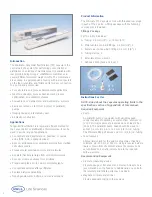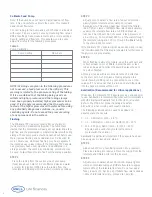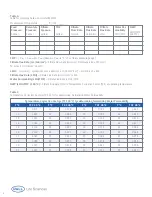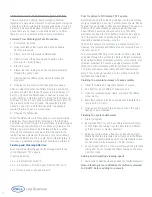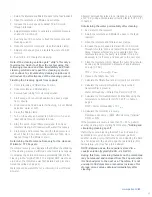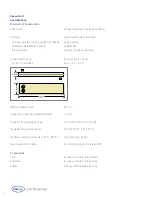
System Hold-up Volume
The
system hold-up volume
is the total volume contained
within the feed/retentate flow path of the TFF system. Most
of this volume is recoverable. The
Minimum Working
Volume
is the system hold-up volume plus a minimum
volume of liquid that must remain in the bottom of the feed
reservoir at the operating flow rate in order to prevent air
from being drawn into the cassette system. At a higher cross
flow rate, a greater volume of product is required in the bottom
of the feed reservoir, to prevent air from getting drawn into
the pump. The minimum working volume limits the maximum
concentration factor achievable. Knowing the minimum
working volume, you can calculate the minimum starting
volume required to achieve a desired concentration factor.
Minimum
Minimum
Concentration
Starting =
Working x
Factor
Volume Volume
If the actual starting volume is less than this value it will
not be possible to reach the concentration factor. Reservoir
design significantly affects the minimum volume required to
prevent air from getting into the system. The Minim System
500mL reservoir was especially designed to minimize the
working volume in the system.
Procedure to determine System Hold-up Volume
It is convenient to perform this procedure following the
determination of water permeability and before performing
air integrity measurements. The Minimate TFF capsule and
lines should already be filled with water and you will need
to drain the feed/retentate flow path for the air integrity test
anyway.
1. Clamp off the filtrate line.
2. Open the retentate screw clamp.
3. Pump down water in reservoir until volume is just above
bottom of reservoir; then stop pump. (Do not allow air to
be drawn into the tubing.)
4. Carefully transfer the retentate line into a 25mL graduated
cylinder. (On Minim System, turn retentate bypass valve
to drain and direct tubing into graduated cylinder.
5. Turn on pump and allow remaining liquid to be pumped
out.
6. Record the volume. This volume is the “system hold-up
volume”.
Procedure to determine Minimum Working Volume
1. Add water to the reservoir
2. Direct retentate and filtrate lines into feed reservoir.
Open the retentate clamp and close the filtrate clamp.
3. Adjust pump to deliver the operating retentate flow rate
that will be used for the process.
4. Direct the retentate line to drain. Watch the water in the
reservoir. When the water reaches a level where it
appears that air is just about to get pulled up into the
feed tubing, immediately return the retentate tubing back
into the feed reservoir. Continue to circulate the water for
a minute to confirm that no air is drawn into the tubing.
If any air is drawn in, add water back into the reservoir
until no more air is drawn into the tubing.
5. Direct the retentate tubing into a graduated cylinder and
allow all the liquid to be pumped out into the cylinder.
6. Stop the pump. If any liquid remains in the reservoir, add
it to the cylinder.
7. Record the volume in the cylinder. This is the minimum
working volume for the system.
Minimate TFF Capsule Integrity Test
Forward Flow Measurement is a quantitative test that
measures the rate of air diffusing through the wetted
membrane or passing through seal defects at a given
pressure. Air diffusion rates can be performed on cassettes
wetted with water or buffer solution.
Capsules are 100% integrity tested after manufacturing.
Therefore it is not necessary to perform an integrity test on a
new Minimate TFF Capsule. However, for critical applications
or if the capsule will be reused, it is recommended that a
forward flow air integrity test be performed to confirm
integrity before and after use.
The forward flow integrity test detects system or
membrane leaks. It does not provide a means to
determine retention characteristics of the membrane.
A simple, quick and inexpensive test protocol is described
below which can be performed without expensive measuring
equipment. The protocol is performed after the capsule has
been preconditioned and flushed with water in order to
completely wet-out the membrane. A pressure gauge at the
feed port is required. The pump must be self-priming, able
to pump air at pressures to 30psi. The Minim System and
most peristaltic pumps are suited for this procedure.
10


